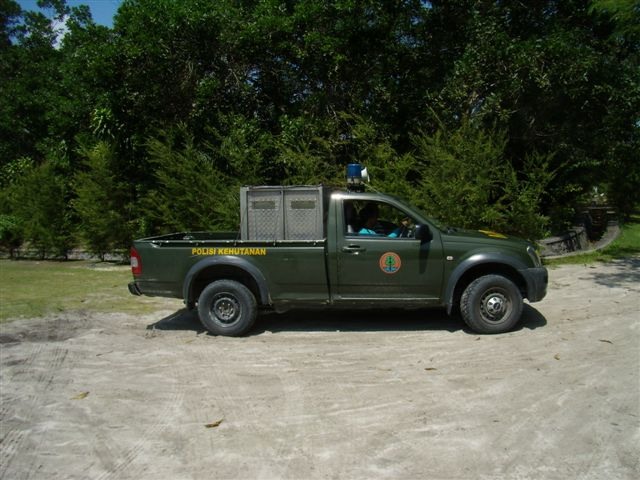I felt really good about what we achieved today. Early, last week, an agile gibbon (Hylobates agilis) was delivered to the Orangutan Care Centre & Quarantine (OCCQ).

The gibbon
The story went he did not “belong” to the man who brought him to the Centre. Rather the man had caught the gibbon after it had escaped from a neighbour’s house. Maybe, maybe not. However, at least the man was giving the gibbon up so we could not be too angry. But, with over three hundred orangutans in captivity, plus a sun bear, we really don’t need another mouth to feed.
As gibbons should be!
Especially not a gibbon. They are fascinating creatures but require specialist management. Gibbons mate for life and fiercely defend their territories. They swing through trees with amazing ease but that does mean their enclosures should ideally be very high and long so they have room to move. None of this suits the set up at the OCCQ.
So we called up Kalaweit, a gibbon rehabilitation project near the provincial capital, Palangka Raya (www.kalaweitfm.com/kalaweituk.htm) . They would happily take our new arrival. The Head of the local Forestry Department’s Agency for the Conservation of Natural Resources, under whose jurisdiction we operate, offered the loan of his vehicle and prepared the necessary paper work. This morning, the gibbon set off to begin what will hopefully be the final stage in his journey from captivity to the forest.
Hopefully the final stage in this gibbon's journey back to wild.
It will cost us $150 in fuel, a night’s hotel accommodation for the drivers, and a donation towards the gibbon’s necessary medical checks. In return we have supported the Forestry Department in achieving their mission, maintained positive cooperation with another wildlife NGO and, most importantly, done the right thing.
Gibbons don’t belong in cages. We can not set him free but Kalaweit can.
"We are participating in WildlifeDirect's business strategy. Please help us by taking this user survey, thank you"


















































